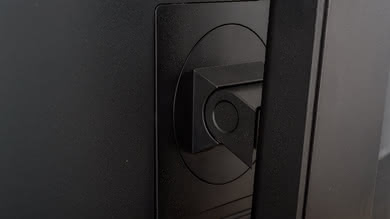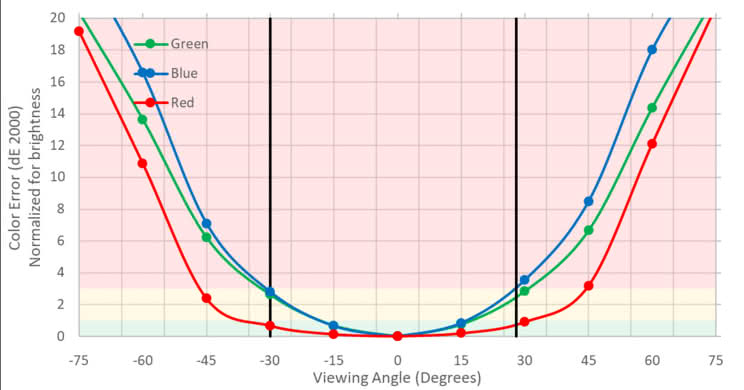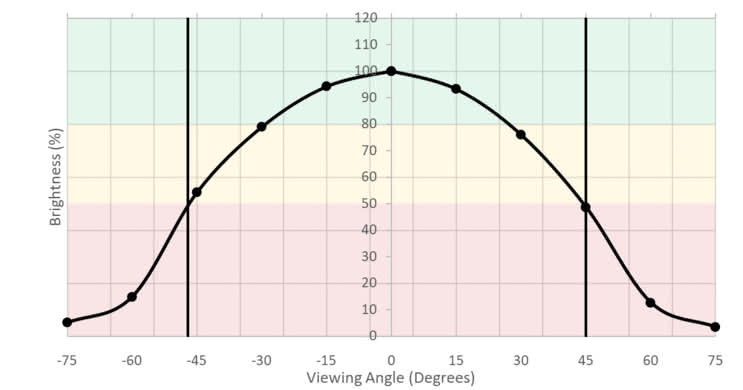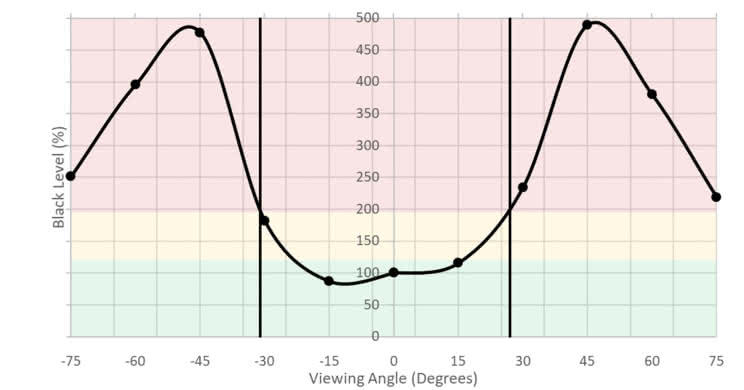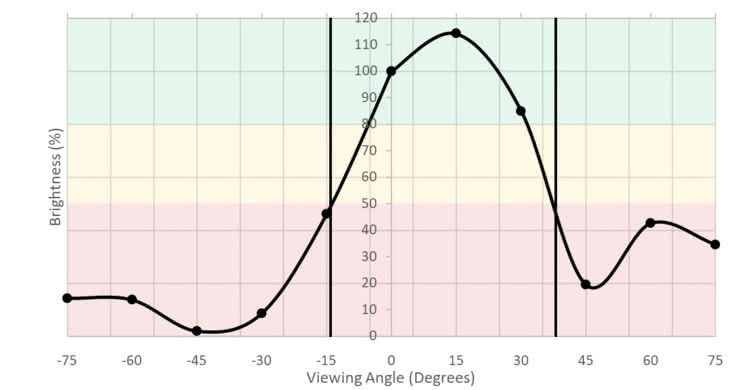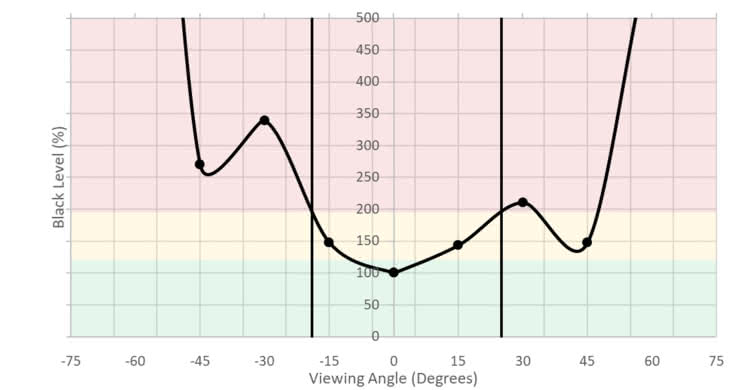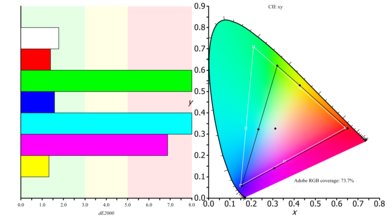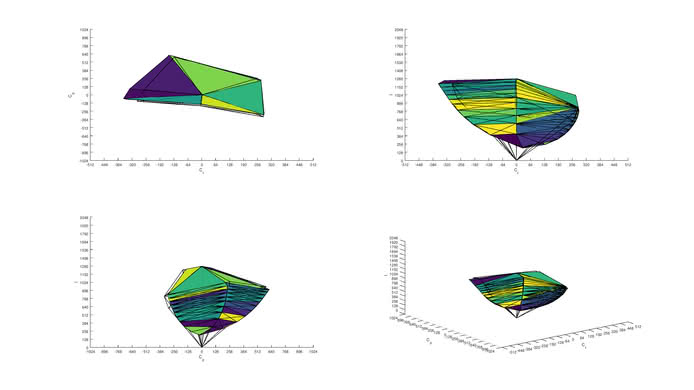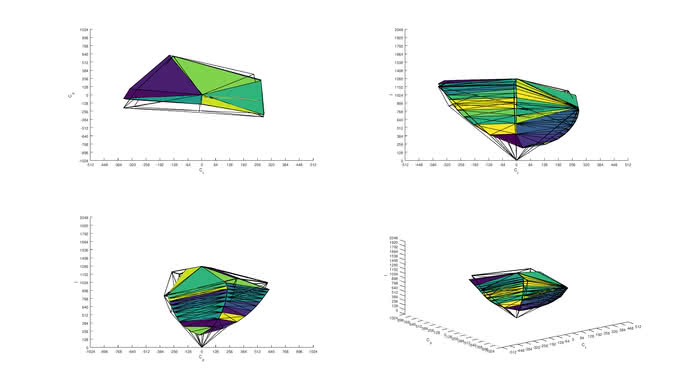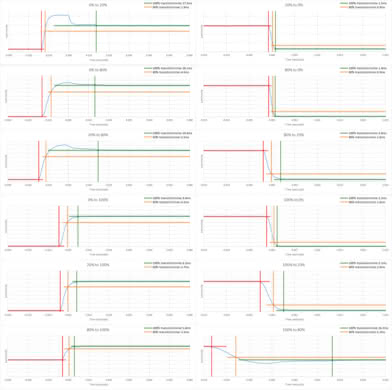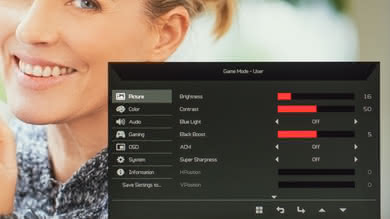The Acer XF251Q Bmiirx is a decent 1080p TN monitor with some great gaming features. It has a fast response time, low input lag, and it supports AMD's FreeSync VRR technology. It has a good design, with a great stand that can be easily adjusted to an ideal viewing position. Unfortunately, it has poor viewing angles, so the image degrades when viewed at an angle, and it isn't very accurate out of the box.
Our Verdict
The Acer XF251Q is a decent monitor for most uses. It has great motion handling and low input lag for gaming, and it supports FreeSync VRR. The stand has great ergonomics, so it can easily be placed in an ideal viewing position. Unfortunately, the image degrades when viewed at an angle, and the 1080p resolution and 25" screen may be too small for some users, and it isn't ideal for multitasking.
-
Low input lag
-
Stand has great ergonomics
-
Image degrades when viewed at an angle
-
Poor accuracy out of the box
The XF251Q is a decent monitor for office use. It has great ergonomics, so it is easy to place it in the ideal viewing position. It has decent peak brightness and great reflection handling, so it looks good in bright offices. Unfortunately, the 25", 1080p screen isn't ideal for multitasking, and the image loses accuracy when viewed at an angle.
Great monitor for gaming. It has an excellent fast response time, but some transitions have a lot of overshoot that can bother some people. It has excellent low input lag, and it supports AMD FreeSync VRR technology for a tear-free gaming experience. Unfortunately, the 25" 1080p screen isn't very immersive.
Decent monitor for multimedia. It has a fast response time, so fast motion scenes look clear, with little motion blur trail. It also has excellent low input lag and great reflection handling. Unfortunately, it is limited to a 1080p resolution that may be insufficient for some people, and the image loses accuracy when viewed at an angle.
Decent monitor for media creation. It has excellent low input lag and a fast response time, and it has excellent coverage of the sRGB color space. Unfortunately, the Adobe RGB coverage isn't ideal for professional photo or video editing, and the 1080p resolution limits how much of your project you can see, and makes it harder to multitask.
The Acer XF251Q does not support HDR. For a good HDR monitor, check out the Samsung CHG70.
- 7.1 Mixed Usage
- 7.0 Office
- 8.0 Gaming
- 6.8 Multimedia
- 6.9 Media Creation
- 5.5 HDR Gaming
- Updated Jan 15, 2019: We tested the monitor's compatibility with NVIDIA's new FreeSync driver. See our full investigation into NVIDIA's FreeSync Drivers here.
- Updated Nov 09, 2018: Review published.
- Updated Nov 07, 2018: Our testers have started testing this product.
- Updated Nov 07, 2018: Early access published.
- Updated Nov 05, 2018: The product has arrived in our lab, and our testers will start evaluating it soon.
- Updated Oct 11, 2018: We've purchased the product and are waiting for it to arrive in our lab.
Differences Between Sizes And Variants
We tested the 24.5" Acer XF251Q Bmiirx. There are other models in the XF series, but beyond FreeSync support they have different specifications.
If someone comes across a different type of panel or if their Acer XF251Q doesn't correspond to our review, let us know and we will update the review. Note that some tests such as the gray uniformity may vary between individual units.
| Model | Size | Resolution | Refresh Rate | Notes |
| XF251Q | 24.5" | 1080p | 75 Hz | FreeSync |
| XFA240 | 24" | 1080p | 144 Hz | FreeSync, DVI |
| XF270H B | 27" | 1080p | 144 Hz | FreeSync |
| XF250Q A | 24.5" | 1080p | 240 Hz | FreeSync, DVI |
| XF250Q B | 24.5" | 1080p | 144 Hz | FreeSync |
| XF250Q C | 24.5" | 1080p | 240 Hz | FreeSync |
The XF251Q we reviewed was manufactured in July 2017
Compared To Other Monitors

The Acer XF251Q is a decent entry-level monitor with great gaming performance. See our recommendations for the best monitors under $200, the best 1080p gaming monitors, the best budget gaming monitors and the best 24-25 inch monitors.
The Acer XF251Q Bmiirx is much better than the Acer GN246HL Bbid. The GN246HL has a faster 144Hz refresh rate, but it doesn't support any variable refresh rate technologies like FreeSync or G-SYNC. The XF251Q has a 75 Hz refresh rate, but it supports FreeSync. The Acer GN246HL uses PWM to dim the backlight, and this causes flicker that may bother some people, whereas the XF251Q is flicker-free. Finally, the XF251Q has much less input lag, especially when gaming at 60Hz.
The Acer XF251Q Bmiirx is slightly better than the ASUS VG245H. Both models are 75Hz TN monitors, with FreeSync support. Both offer very similar performance, but the XF251Q we reviewed had better black uniformity and much better color volume. The ASUS VG245H is much more accurate out of the box, but a few setting changes on the XF251Q can correct this.
The ViewSonic XG2402 is better than the Acer XF251Q Bmiirx. The XG2402 has much better motion performance, thanks to the faster 144 Hz refresh rate. The XG2402 is also a bit brighter, and has a better color gamut and better color volume.
The Acer XF251Q Bmiirx is a 25" TN monitor, whereas the Samsung CF398 is a VA monitor. The XF251Q has better motion handling, thanks to a faster response time. The XF251Q is a bit brighter, but the CF398 has much better native contrast, so it looks better in a dark room.
The Dell S2417DG is better than the Acer XF251Q Bmiirx. The S2417DG has much better motion handling, thanks to a much faster refresh rate, faster response time, and optional black frame insertion feature. The Dell also has slightly less input lag. While the Acer XF251Q supports AMD's FreeSync VRR, the Dell S2417DG supports NVIDIA's G-SYNC instead, so the compatibility with your graphics card should be taken into account when choosing between these two.
Test Results
The Acer XF251Q has a good design. The stand has a large footprint but supports the monitor well. It has great ergonomics, and can easily be adjusted to an optimal viewing position. There is an included headphone bracket that attaches to the stand, which is great. It is mostly made of plastic, but it has a good build quality and there shouldn't be any issues.
Great ergonomics. The Acer XF251Q can easily be adjusted to an optimal viewing position. It can rotate to a portrait/landscape orientation, and unlike some monitors with this feature, it can rotate in either direction.
The back is plain with a simple design. There is a small hole in the stand that works well for cable management. There is also a headphone bracket that can be clipped on to the top of the stand.
The monitor has a good build quality. It is mostly made from plastic, but it is solid and seems well built, similar to the ASUS VG245H.
Mediocre contrast ratio, but one of the best TN monitors we've tested so far; only slightly worse than the ASUS VG245H.
There is no local dimming feature on this monitor. The video is for reference only.
The Acer XF251Q has decent peak brightness, with no variation in brightness with different content, which is great. The peak brightness is very similar to the ASUS VG245H.
HDR is not supported on this monitor.
Disappointing horizontal viewing angles typical of TN monitors. The brightness drops by half at about 45°, which is mediocre, but the black levels increase sharply after about 30°, and the colors shift significantly at about the same angle.
Disappointing vertical viewing angles; slightly better than the ASUS VG245H but worse than the ViewSonic XG2402. The XF251Q is definitely best viewed at eye level.
The Acer XF251Q bmiirx has good gray uniformity. The edges of the screen are quite a bit darker due to the poor vertical viewing angles. The center of the screen is more uniform, and there is very little dirty screen effect (DSE). In near-dark scenes, the uniformity is better, and there is almost no DSE.
Out of the box, the Acer XF251Q bmiirx has poor accuracy. The white balance dE and color dE are very high, to the point where we expect most people will notice the errors. The gamma does not follow the target curve at all, but despite the strange look of the curve we don't expect this to be noticeable for most people.
After calibration, nearly all of the white balance and color errors were corrected. Gamma follows the target curve nearly perfectly, but some scenes will be too bright. The color temperature is nearly spot-on the 6500 K target. Some colors are still inaccurate, but this shouldn't be noticeable by most people.
You can download our ICC profile calibration here. This is provided for reference only and should not be used, as the calibration values vary per individual unit even for the same model due to manufacturing tolerances.
s.RGB Picture Mode: User (calibrated)Adobe RGB Picture Mode: User
Great SDR color gamut. Excellent s.RGB coverage, but it doesn't quite cover the entire gamut. Coverage of the wider Adobe RGB color space isn't as good, and is not ideal for professional photo or video editing.
s.RGB Picture Mode: UserAdobe RGB Picture Mode: User
Great SDR color volume. It is mainly limited by the native contrast, as it can't produce deep, dark colors very well. Like many monitors, it can't produce very bright blues, but overall it fills out its gamut well in most luminance levels.
HDR is not supported on this monitor.
HDR is not supported on this monitor.
There are no signs of temporary image retention, even immediately after displaying our high-contrast static test image for 10 minutes.
Over Drive Off
Over Drive Off Motion Photo
Over Drive Normal
Over Drive Normal Motion Photo
Over Drive Extreme
Over Drive Extreme Motion Photo
The XF251Q has an excellent fast response time, but there is significant overshoot with any Over Drive setting. This causes some noticeable haloing around moving objects, as seen in the above motion photos.
When connected to a FreeSync compatible device, like a PC with an AMD graphics card or an Xbox One S/X, the Over Drive option is locked to 'Normal'. On our test PC it was impossible to change the setting even with FreeSync disabled. On the Xbox On S/X however, disabling FreeSync allowed us to change the Over Drive setting.
The Acer XF251Q bmiirx is completely flicker-free, as it directly dims the backlight without using PWM. Unfortunately, it does not have an optional black frame insertion feature to reduce persistence blur.
The Acer XF251Q has a 75 Hz native refresh rate, which while better than a 60 Hz monitor, might not be fast enough for more serious gamers. It supports FreeSync VRR, but has a limited range, and no LFC as the VRR minimum is too close to the native refresh rate. This means that in more intense scenes, there may be tearing if the frame rate drops below 40 fps
Update 01/15/2019: Unfortunately, the XF251Q is not compatible with NVIDIA's new FreeSync drivers, as it does not have a DisplayPort connection.
Excellent low input lag, even with the refresh rate set to 60 Hz. Non-native resolutions are not properly supported, as they are always upscaled to 1080p without you knowing, and there is no option to disable upscaling.
The Acer XF251Q has a 24.5" screen and a 1080p resolution, good for casual use, but many users may find this too small for more serious work.
There are two HDMI inputs and a VGA port, but no DisplayPort or DVI. There is a 3.5mm analog audio out port, it is a headphone port with adjustable volume on the monitor's on screen display.
There are a few additional additional features on the XF251Q. It has built-in speakers, but does not support HDR.
- Game Modes: There are three preset configurations for Action, Racing, and Sports, and a fourth setting that can be customized to your liking.
- Aim Point: There are three selectable cross-hairs that can be added, good for FPS games that don't have one.



